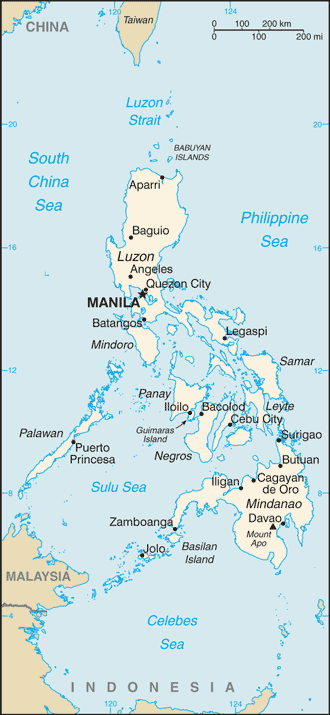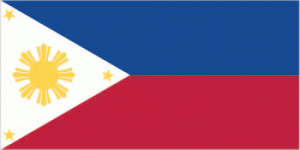Philippines
 Aglow Leader: Tessie Felicio
Aglow Leader: Tessie Felicio
National Board President
Capital: Manila
Pray:
- Pray for the Aglow groups and leaders to be strengthened.
- Pray for all the resources and creativity needed to fulfill the intentions of God in the nation of The Philippines.
- Pray for the Aglow prayer group in the Capital city.
- Pray for godly government leaders. Blessed is the nation whose God is The Lord, the people whom He has chosen for His own inheritance. Psalm 33:12
Proclaim:
- Arise, shine; for your light has come! And the glory of the LORD is risen upon you. For behold, the darkness shall cover the earth, and deep darkness the people; but the LORD will arise over you, and His glory will be seen upon you. Isaiah 60:1,2 (NKJV)
- Lift up your heads, O you gates! Lift up, you everlasting doors! And the King of glory shall come in. Who is this King of glory? The Lord of hosts, He is he King of glory. Selah Psalm 24:9-10 (NKJV)
Interesting Facts About The Philippines
 Background: The Philippine Islands became a Spanish colony during the 16th century; they were ceded to the US in 1898 following the Spanish-American War. In 1935 the Philippines became a self-governing commonwealth. Manuel QUEZON was elected president and was tasked with preparing the country for independence after a 10-year transition. In 1942 the islands fell under Japanese occupation during World War II, and US forces and Filipinos fought together during 1944-45 to regain control. On 4 July 1946 the Republic of the Philippines attained its independence. A 21-year rule by Ferdinand MARCOS ended in 1986, when a “people power” movement in Manila (“EDSA 1”) forced him into exile and installed Corazon AQUINO as president. Her presidency was hampered by several coup attempts that prevented a return to full political stability and economic development. Fidel RAMOS was elected president in 1992. His administration was marked by increased stability and by progress on economic reforms. In 1992, the US closed its last military bases on the islands. Joseph ESTRADA was elected president in 1998. He was succeeded by his vice-president, Gloria MACAPAGAL-ARROYO, in January 2001 after ESTRADA’s stormy impeachment trial on corruption charges broke down and another “people power” movement (“EDSA 2”) demanded his resignation. MACAPAGAL-ARROYO was elected to a six-year term as president in May 2004. Her presidency was marred by several corruption allegations but the Philippine economy was one of the few to avoid contraction following the 2008 global financial crisis, expanding each year of her administration. Benigno AQUINO III was elected to a six-year term as president in May 2010 and was succeeded by Rodrigo DUTERTE in May 2016.
Background: The Philippine Islands became a Spanish colony during the 16th century; they were ceded to the US in 1898 following the Spanish-American War. In 1935 the Philippines became a self-governing commonwealth. Manuel QUEZON was elected president and was tasked with preparing the country for independence after a 10-year transition. In 1942 the islands fell under Japanese occupation during World War II, and US forces and Filipinos fought together during 1944-45 to regain control. On 4 July 1946 the Republic of the Philippines attained its independence. A 21-year rule by Ferdinand MARCOS ended in 1986, when a “people power” movement in Manila (“EDSA 1”) forced him into exile and installed Corazon AQUINO as president. Her presidency was hampered by several coup attempts that prevented a return to full political stability and economic development. Fidel RAMOS was elected president in 1992. His administration was marked by increased stability and by progress on economic reforms. In 1992, the US closed its last military bases on the islands. Joseph ESTRADA was elected president in 1998. He was succeeded by his vice-president, Gloria MACAPAGAL-ARROYO, in January 2001 after ESTRADA’s stormy impeachment trial on corruption charges broke down and another “people power” movement (“EDSA 2”) demanded his resignation. MACAPAGAL-ARROYO was elected to a six-year term as president in May 2004. Her presidency was marred by several corruption allegations but the Philippine economy was one of the few to avoid contraction following the 2008 global financial crisis, expanding each year of her administration. Benigno AQUINO III was elected to a six-year term as president in May 2010 and was succeeded by Rodrigo DUTERTE in May 2016.
The Philippine Government faces threats from several groups, some of which are on the US Government’s Foreign Terrorist Organization list. Manila has waged a decades-long struggle against ethnic Moro insurgencies in the southern Philippines, which led to a peace accord with the Moro National Liberation Front and a separate agreement with a break away faction, the Moro Islamic Liberation Front. The decades-long Maoist-inspired New People’s Army insurgency also operates through much of the country. In 2017, Philippine armed forces battled an ISIS-Philippines siege in Marawi City, driving DUTERTE to declare martial law in the region. The Philippines faces increased tension with China over disputed territorial and maritime claims in the South China Sea.
Government Type: presidential republic
Population: 110,818,325 (July 2021 est.)
Ethnic Groups: Tagalog 24.4%, Bisaya/Binisaya 11.4%, Cebuano 9.9%, Ilocano 8.8%, Hiligaynon/Ilonggo 8.4%, Bikol/Bicol 6.8%, Waray 4%, other local ethnicity 26.1%, other foreign ethnicity .1% (2010 est.)
Languages: unspecified Filipino (official; based on Tagalog) and English (official); eight major dialects – Tagalog, Cebuano, Ilocano, Hiligaynon or Ilonggo, Bicol, Waray, Pampango, and Pangasinan
Religions: Roman Catholic 80.6%, Protestant 8.2% (includes Philippine Council of Evangelical Churches 2.7%, National Council of Churches in the Philippines 1.2%, other Protestant 4.3%), other Christian 3.4%, Muslim 5.6%, tribal religions .2%, other 1.9%, none .1% (2010 est.)
Interesting Facts information from the cia.gov website. Read more about The Philippines

I desire to be a part
of Aglow-globalprayer